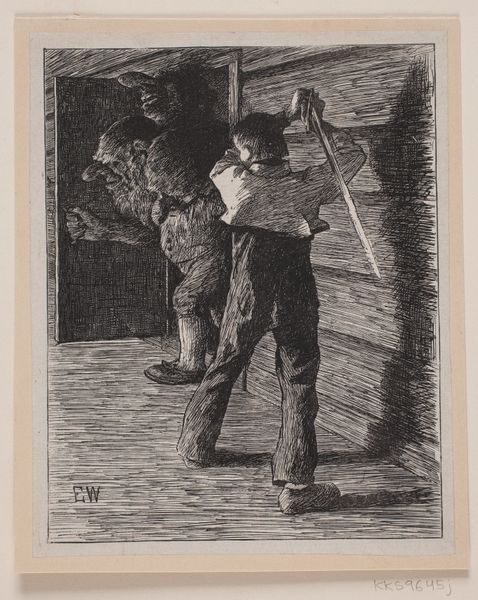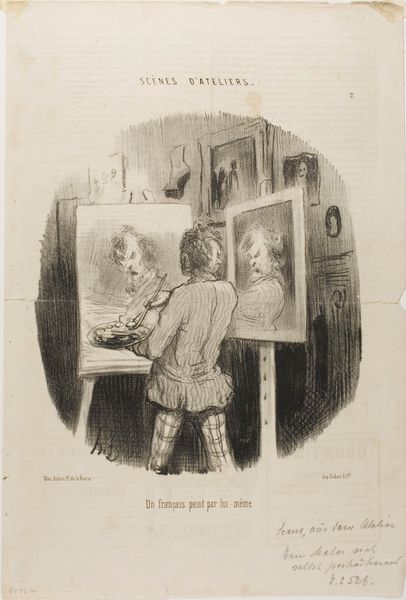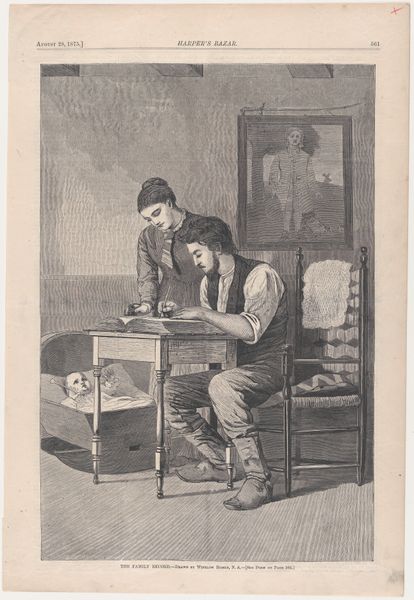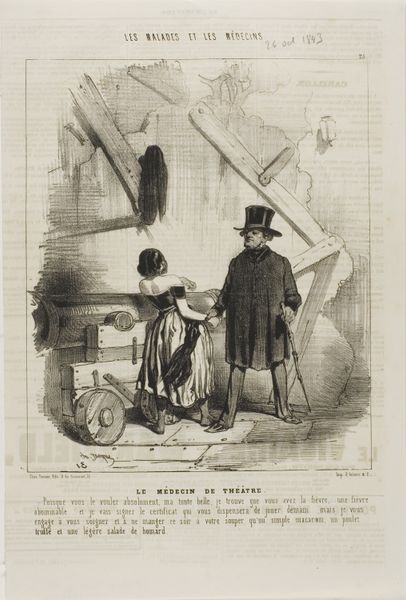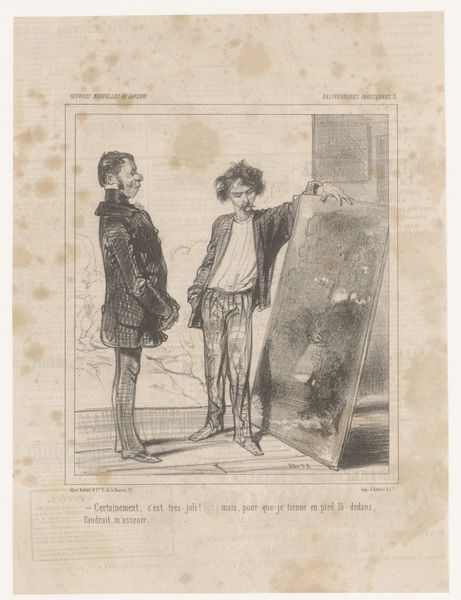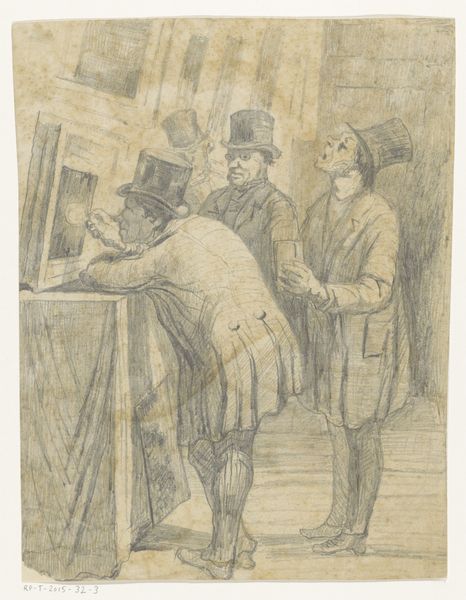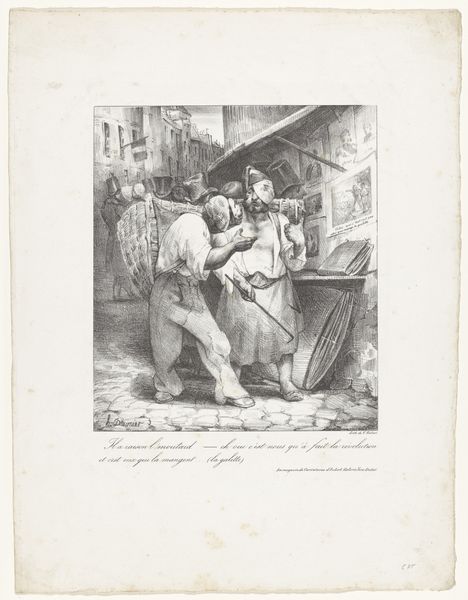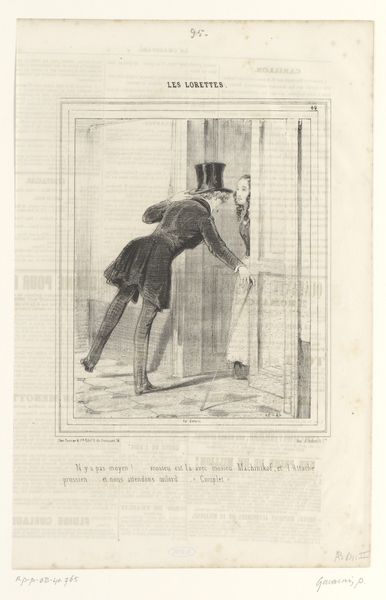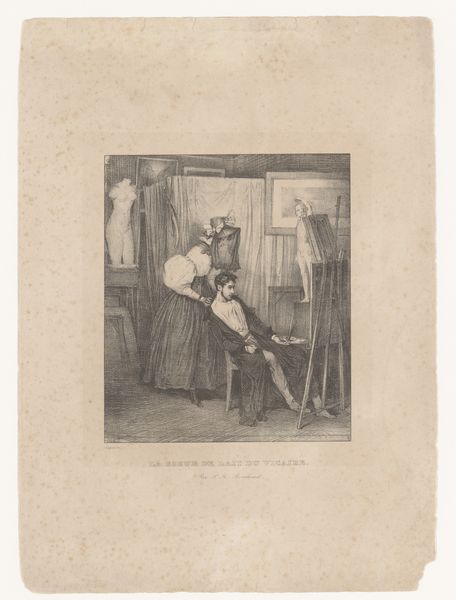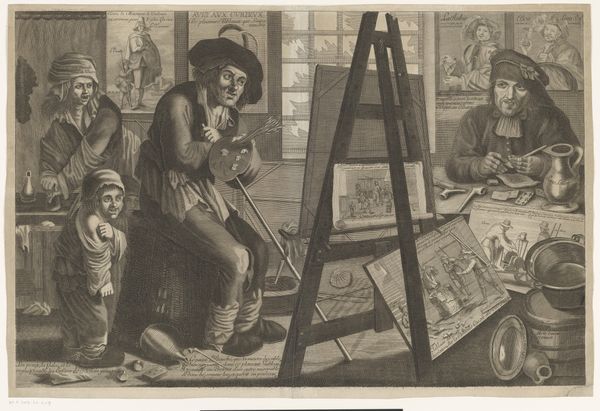
print, woodblock-print, woodcut, wood-engraving, engraving
#
narrative-art
# print
#
woodblock-print
#
woodcut
#
19th century
#
united-states
#
genre-painting
#
history-painting
#
wood-engraving
#
engraving
Dimensions: 14 3/16 x 9 3/16 in. (36.0 x 23.3 cm)
Copyright: Public Domain
Curator: Winslow Homer’s wood engraving, “Thanksgiving Day,” dates to 1865. You can find this piece today at the Minneapolis Institute of Art. Editor: My first thought? An odd sort of peace is radiating here, maybe a tenuousness. The monochromatic palette lends a sobriety, while that very careful engraving has a tactile quality to it, like a newsprint from a bygone era. Curator: Well, think about the socio-political context. The Civil War had just ended. Publications like *Frank Leslie's Illustrated Newspaper*, where this image first appeared, played a crucial role in shaping public opinion during that tumultuous period. This image represents a desire for reunification, for the return of normalcy. Editor: Normalcy manufactured through carefully placed imagery, right? A musket going back above the mantle as evidence of some return to former things. What’s the materiality speaking to, here? Wood engraving allowed for mass reproduction, so these weren’t unique objects. Curator: Exactly. The magazine was a tool in reconstructing national identity and promoting a particular narrative of Thanksgiving after such a divisive war. And it reflects what was permissible within the illustrated press at that time. Editor: And who the press was working for. Take another look: it’s a bit staged. That woman could've helped hoist it; the fireplace beneath is practically crammed with little decorative gestures that perform ‘homeliness,’ from the tiled proverbs to vases, portraits, to the gentleman up there almost struggling to fix the family firearms back where they belong… Who are they trying to convince here? Curator: It's a staged tableau, yes, meant to evoke an idealized vision of postwar American life. Think of this circulation in relation to prints depicting battlefield horrors or freed slaves; consider who gets represented, and in what ways. How did these visuals enforce social norms or challenge them? Editor: I do see what you mean, even just in how carefully it must've all been blocked together as a printing image—Homer was good at his work. Thanks for teasing all of that out of it. Curator: And thanks to you for that insight on the labor. I think together, we get a much fuller picture of Winslow Homer's work.
Comments
No comments
Be the first to comment and join the conversation on the ultimate creative platform.
